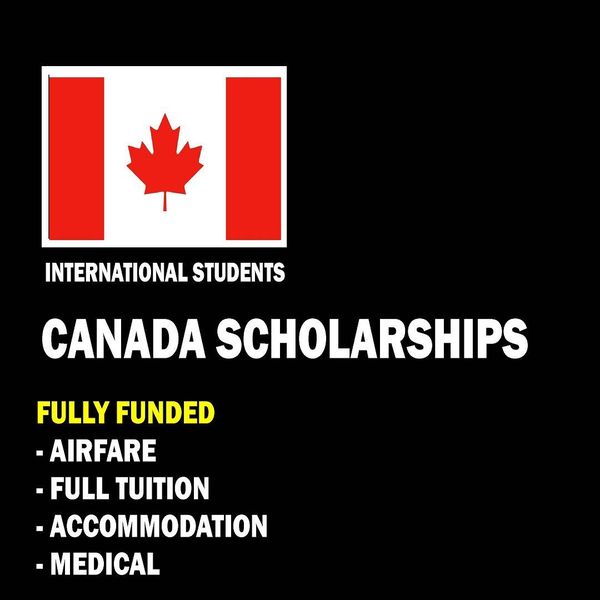How to easily get a Transfer Student Scholarship in Canada
Are you a student somewhere else who wants to secure a transfer student scholarship in Canada? This blog post is all you need to get yourself started. Transferring to a university in Canada as an international student comes with many financial considerations. Scholarships for transfer students can help reduce tuition costs and make higher education more accessible. This guide outlines how to get a transfer student scholarship in Canada.
What is a Transfer Student Scholarship?
A transfer student scholarship is a grant awarded to students transferring from one post-secondary institution to another. These scholarships are intended to assist transfer students in completing their undergraduate degree at a new university. To qualify as a transfer student, an applicant normally must have completed at least one year or 30 credit hours at their previous college or university. Transfer student scholarships focus on transfers within Canada or from abroad.
Eligibility for Transfer Student Scholarships
There are several eligibility requirements students must meet to be considered for transfer student scholarships in Canada:
- Have a minimum grade point average (GPA), usually around 3.0 or higher on a 4.0 scale. GPA requirements vary by scholarship.
- Be enrolled full-time in an undergraduate program at their new institution. Most scholarships require at least 30 credit hours in the first year to qualify.
- Transfer credits and courses from their previous institution must be accepted by the receiving university. The credits should count towards an undergraduate degree program.
- Meet any additional criteria specified for the particular scholarship, like field of study, extracurricular involvement, or citizenship status.
- Apply within deadlines which are usually early spring before a fall transfer. This allows decisions to be made before the new school year.
Deciding on a University
Before starting the application process, prospective transfer students need to choose which Canadian university to attend. Some factors to consider include:
- Academic programs offered and required courses for a desired major or minor subject.
- The cost of tuition as an international transfer student may differ between institutions and provinces.
- Size and location of the university – whether a large research school or a smaller primarily undergraduate college.
- Campus culture and extracurricular opportunities are available.
- Any existing partnership agreements the previous institution has with Canadian universities. These can provide admission and scholarship priority.
Researching Available Scholarships
Once a university is selected, researching scholarship possibilities there is essential. Many offer awards specifically for international or domestic transfer students. Good sources of transfer student scholarships in Canada include:
- University or college website financial aid pages listing all internal awards. These are most common.
- External provincial or national scholarship foundations not affiliated with one school.
- Industry-tied scholarships focused on certain fields like science, technology, or business.
- Scholarships for underrepresented groups or those with ties to certain areas.
- Carefully reviewing eligibility criteria when exploring scholarships is important. It is also wise to contact the university financial aid office to inquire about any non-advertised or special awards for transfer applicants.
Crafting a Strong Application
With the HOW TO GET A TRANSFER STUDENT SCHOLARSHIP IN CANADA focus clear, a competitive application is needed. Scholarship committees want to understand an applicant’s academic strengths and interests in a positive light. Effective application elements include:
- demonstrating consistent high achievement as shown through transcripts and GPA meeting minimums.
- Articulating education and career goals and their alignment to the intended program of study clearly.
- Submitting references from professors able to speak to academic ability and drive with examples.
- Highlighting extracurricular involvement, leadership roles, work experience, and community service on a resume.
- Answering short-answer essay prompts thoughtfully to convey what sets oneself apart.
- Proofread all materials carefully for perfection in writing mechanics and presentation.
- Getting application documents in well before published deadlines to avoid rushed submissions.
Following Up After Applying
Once a transfer student scholarship application is complete, it is important to follow up appropriately:
- Note the application receipt confirmation process and inquire if none is provided. This ensures materials have been received and considered on time.
- Check the university scholarship website for decision notification dates and monitor email for updates.
- Express gratitude by letter for any awards received, introducing oneself to donors if pertinent details are provided.
- Request feedback on denied applications if an appeals or reconsideration process exists, to improve future submissions.
- Consider appealing an application decision through updated documentation of new achievements if allowed.
- Maintain high grades and involvement after transferring to be eligible for additional internal scholarships in higher years of study.
Maximizing Financial Supports
In summary, to speed up your chances of getting your transfer student scholarship, it is wise to give it all your time and effort. This includes carefully researching and applying for every applicable award as early as permitted. Maintaining strong academics will qualify for further assistance in subsequent years as well. With diligent effort and planning, transfer students can significantly offset university costs through scholarship funding in Canada.





